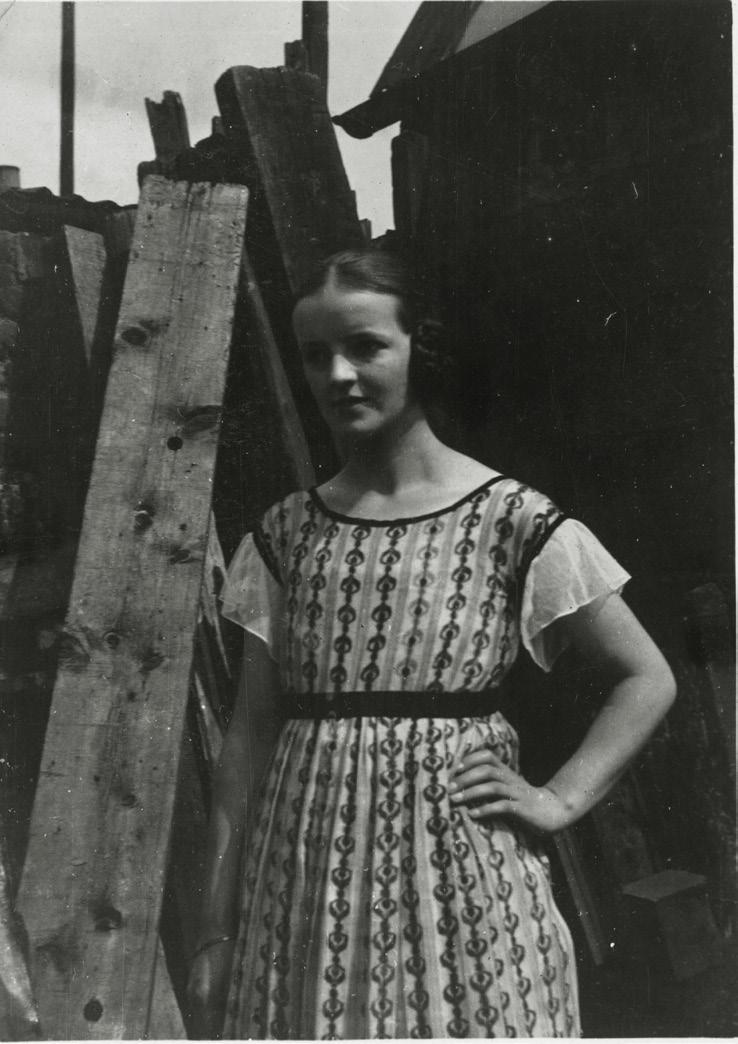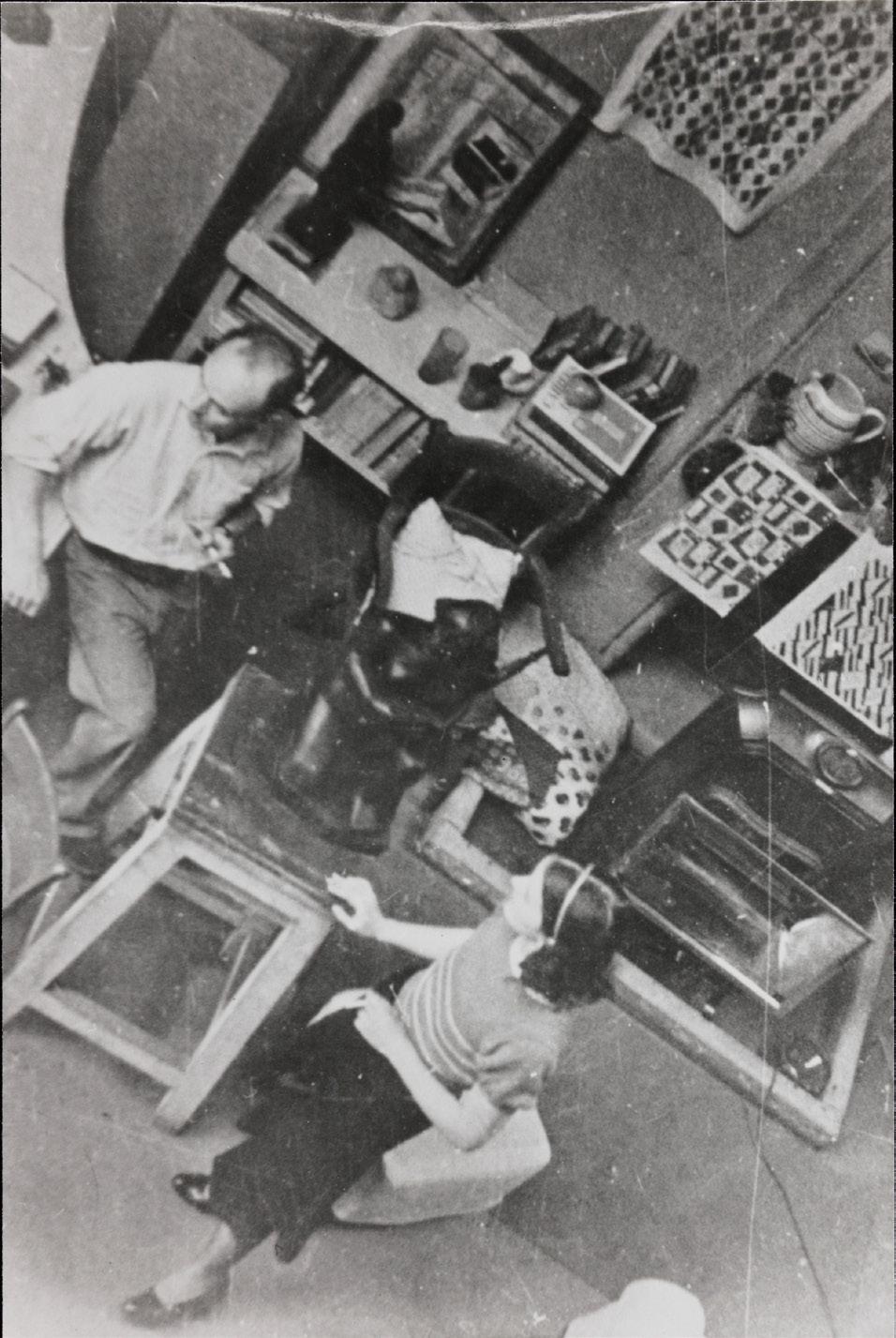45 PARK LANE
In the footsteps of legendary artists

In the footsteps of legendary artists

From the hotel where art meets modernism, take a bespoke walking tour following in the footsteps of one of the UK’s most legendary artists.
The landmark Modernist building that’s home to our 45 Park Lane hotel is steeped in a moment of history in which London played host to the shining lights of European Modernism.
With World War II looming, visionary artists, writers and architects –including Bauhaus director, Walter Gropius, who oversaw the original design of 45 Park Lane – flocked to Hampstead from the continent. In this leafy corner of London, they established iconic architecture such as the Isokon building, offering a new style of semi-communal living, where they could share studios, meals and strolls on the heath.
At the centre of this vibrant community was a young Barbara Hepworth – 25 years old and a firm believer that sculpture should and could embody the rhythms of life itself. Now widely recognised as a leading Modernist sculptor, she pioneered the use of negative space and the juxtaposition of complex interiors with smooth, precise exteriors.

Delve into Hepworth’s world to discover how these formative years in London shaped the mind, hands and sculptures of one of Britain’s most influential artists.
Our bespoke private tour takes in the headquarters of the Hampstead Modernists and two of Hepworth’s most celebrated public artworks, as your expert guide regales you with stories from her unparalleled life.
BEN NICHOLSON AND BARBARA HEPWORTH IN THE MALL STUDIO, CIRCA 1932Born in Wakefield, Yorkshire in 1903, Hepworth showed early promise as a musician but a scholarship to Leeds School of Art, where she first met Henry Moore, proved a turning point. After further studies at the Royal College of Art and a stint in Italy, she settled in London with her husband, fellow sculptor John Skeaping.

In 1928, just off Hampstead’s Tasker Road, where a wooden gate opened onto an overgrown path and a row of cottages, the couple found a home at 7 Mall Studios. Their illustrious neighbours included not only Gropius and Moore, but also Piet Mondrian, László Moholy-Nagy, Roland Penrose and Lee Miller, among others.
A crucible of creativity in the late 1920s and early 1930s, Mall Studios set the scene for a fertile exchange of ideas, cultures and even lovers. Here you’ll discover how Hepworth left Skeaping for the painter Ben Nicholson (who moved in with her six months after they met) and relive the raucous evening that saw American artist Alexander Calder perform the UK debut of his infamous ‘Wire Circus’.
When bombs began to fall on London, the Modernists disbanded: Gropius fled to Connecticut, the Moores to Hertfordshire, and Hepworth and Nicholson to Cornwall. Hampstead’s moment at the centre of international Modernism had passed but its legacy remains.
HEPWORTH’S SCULPTURE STUDIO AT 7 THE MALL, SUMMER 1933Hepworth was a radical. Throughout her career, she aimed to infuse her art with life, and her life with art.

A visionary spirit propelled Hepworth, even as circumstances got tough. When Hepworth left London for St Ives, she had four small children in tow (including five-year-old triplets). A staunch feminist who fought for the validity of ‘the woman’s approach’ in the largely male-dominated field of sculpture, Hepworth railed against the blatant misogyny of contemporary critics and strove to find a way to take care of her children, whilst continuing to produce her art. She found rich inspiration in her role as a mother and worked all hours of the day.
In 1953, Hepworth’s eldest son Paul was tragically killed in a plane crash while serving with the Royal Air Force. The grief transformed Hepworth, who channelled her suffering into sculptures that sought to express his vitality and radiance, such as ‘Monolith (Empyrean)’, one of Hepworth’s most important and moving public commissions. Now housed in the picturesque grounds of Kenwood House on Hampstead Heath, it holds the key to discovering how motherhood and loss transformed Hepworth’s sensitivity to form.
“My studio was a jumble of children, rocks, trees, sculptures, importunate flowers and washing.”
London and its cultural riches allowed Hepworth to experiment, be challenged, and ultimately forge her reputation as one of the leading Modernist sculptors of the 20th century.
At the age of 48, Hepworth was enjoying considerable success with shows in Paris, New York and London, where two of her sculptures were being installed on the South Bank for the Festival of Britain, and her ‘Bicentric Form’ had been selected by Tate Britain for its permanent collection.

Theatre lay at the heart of post-war London’s regeneration and it proved a rich seam of work for Hepworth, who designed sets and costumes for both The Old Vic and the Royal Opera House. Music, dance and theatre were hugely important to Hepworth and these commissions led to a renewed interest in metalwork, including one of her most prized public sculptures: ‘Winged Figure’ (1963) – the last stop on our tour.
Enjoy a private tour created exclusively for guests of 45 Park Lane. Your passionate, knowledgeable guide has over 10 years of experience in the art world and can adapt the content to you. All levels of interest can follow in the footsteps of this legendary artist, from the mildly curious to Hepworth enthusiasts.
HEPWORTH — RHYTHM & FORM INCLUDES:
ONE-NIGHT STAY IN A ROOM OR SUITE FOR TWO PEOPLE ENGLISH BREAKFAST
TWO-HOUR EXPERT GUIDED TOUR WITH CHAUFFEUR-DRIVEN CAR
TWO EXHIBITION TICKETS TO TATE BRITAIN
Deluxe King Room from £1,430 for two per night
Barbara Hepworth at the Royal College of Art, aged 18 Image courtesy of Bowness
Ben Nicholson and Barbara Hepworth in the Mall studio, c. 1932 Purchased by the Tate Archive from Ben Nicholson’s executors in 1987. © Tate, Photo: Tate
For reservations or information, please contact 45 Park Lane: +44 (0)20 7493 4545 reservations.45l@dorchestercollection.com
Offer subject to availability and terms & conditions.
For a supplement, tours and guide can be extended from two hours to a full day on request.
As an optional extra, a trip can also be arranged to visit The Hepworth Wakefield in West Yorkshire (additional cost for transportation and entry applies).
Hepworth’s sculpture studio at 7 The Mall, summer 1933
Photo by Paul Laib. Image courtesy of The de Laszlo Collection of Paul Laib Negatives, The Courtauld Institute of Art, London. © The de Laszlo Foundation
Barbara Hepworth, ‘Monolith (Empyrean)’, Limestone, 1953
Photographed at Hepworth’s Whitechapel retrospective, 1954 Image courtesy of Bowness
Barbara Hepworth with ‘Sphere and the Inner Form’ in her studio in St Ives, 1963 Image courtesy of Associated Press
If we’ve ignited your interest in artist trails, Dorchester Collection also welcomes you to follow in the footsteps of:
Picasso’s Montmartre
Monet – Revolutionary Brushstrokes
Rodin – Love and Torment
Available at Le Meurice, Paris +33 (0)1 87 16 44 59 reservations.lmp@dorchestercollection.com
Caravaggio – Rebel and Rome
Available at Hotel Eden, Rome +39 06 8938 6470
reservations.her@dorchestercollection.com
Fontana – Slashing Space (launching summer 2023)
Available at Hotel Principe di Savoia, Milan